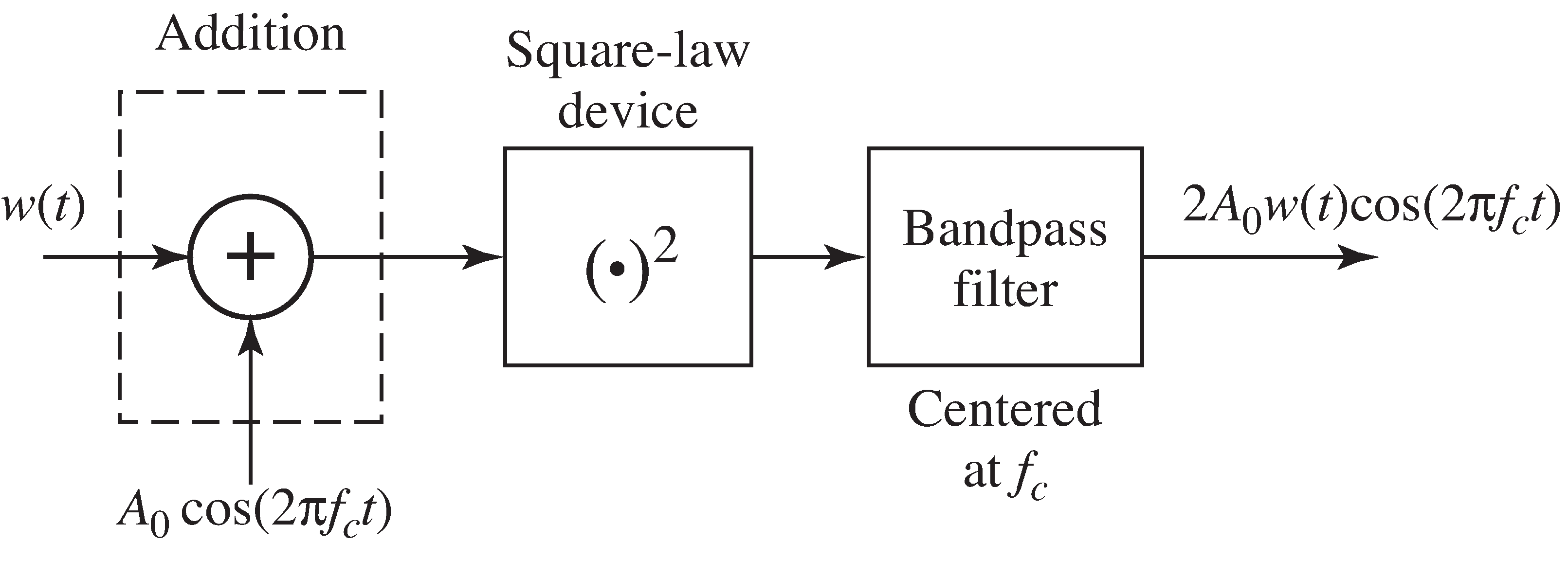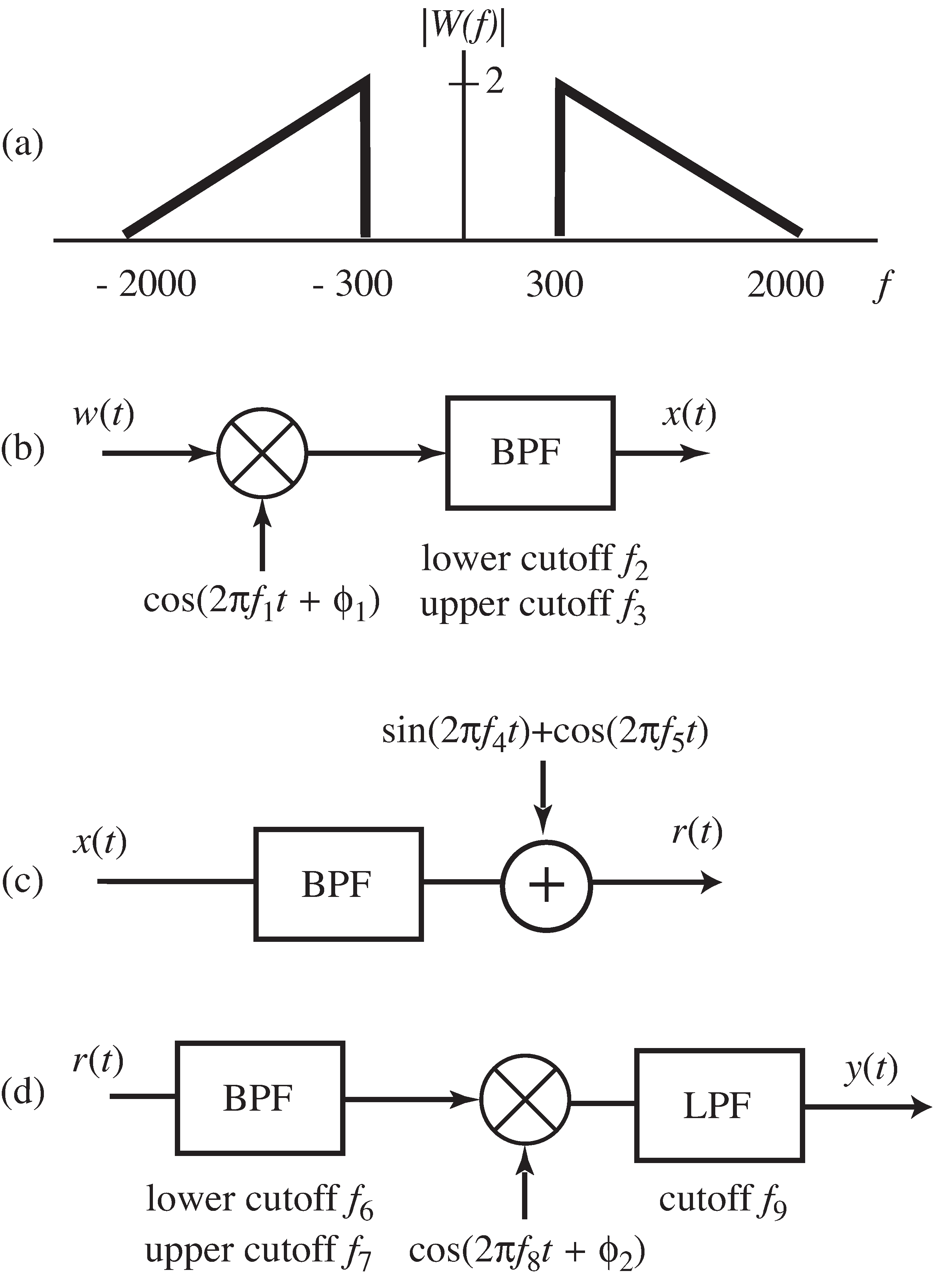| << Chapter < Page | Chapter >> Page > |
TRUE or FALSE: A small, fixed phase offset in the receiver demodulatingAM with suppressed carrier produces an undesirable low frequency modulated version of the analog message.
Try different frequency offsets
gam
,
,
,
.
How well does the recovered message
match the actual message
?
For each case, what is the spectrum of
? Hint: look over
more than just the first
second to see the effect.
Consider the system shown in [link] . Show that the output of the system is , as indicated.
Create a M atlab routine to implement the square-law mixing modulator of [link] .
AM.m (to recover the original
).
Exercise [link] essentially creates a transmitter and receiver based on the square-law modulator(rather than the more standard mixing modulator). Using this system:
Consider the transmission system of [link] . The message signal has magnitude spectrum shown in part (a).The transmitter in part (b) produces the transmitted signal which passes through the channel in part (c). The channel scales thesignal and adds narrowband interferers to create the received signal . The transmitter and channel parameters are radians, kHz, kHz, kHz, kHz, and kHz. Thereceiver processing is shown in [link] (d). All bandpass and lowpass filters are considered ideal with a gainof unity in the passband and zero in the stopband.

An analog baseband message signal has all energy between and Hz. It is upconverted to the transmitted passband signal via AM with suppressed carrier
where a carrier frequency . The channel is a pure delay and the received signal is where the delay is an integer multiple of the carrier period ( ) plus a fraction of given by . The mixer at the receiver is perfectly synchronizedto the transmitter so that the mixer output is
The receiver mixer phase may not match the transmitter mixer phase . The receiver lowpass filters to produce
where the lowpass filter is ideal with unity passband gain, linear passband phase with zero phase at zero frequency, and cutoff frequency .

Notification Switch
Would you like to follow the 'Software receiver design' conversation and receive update notifications?